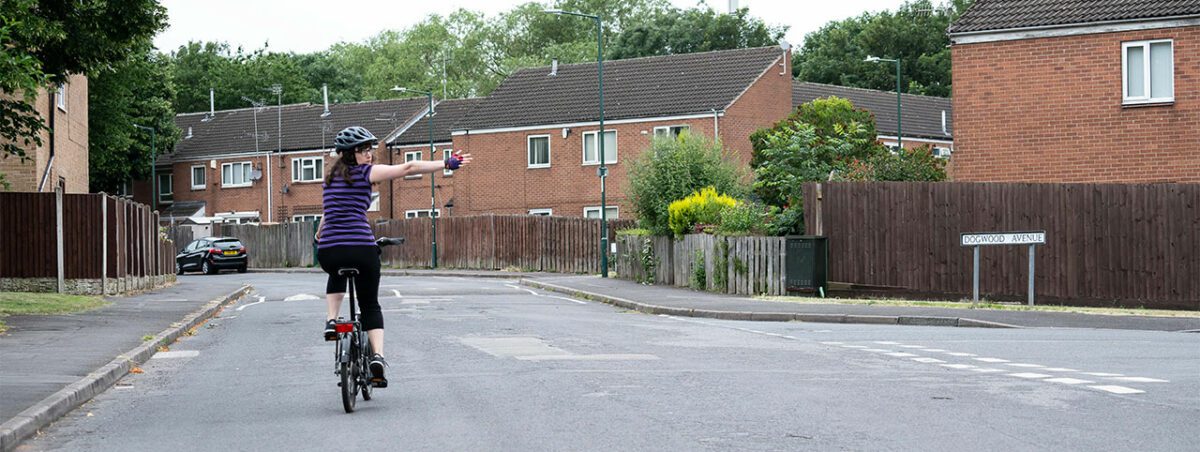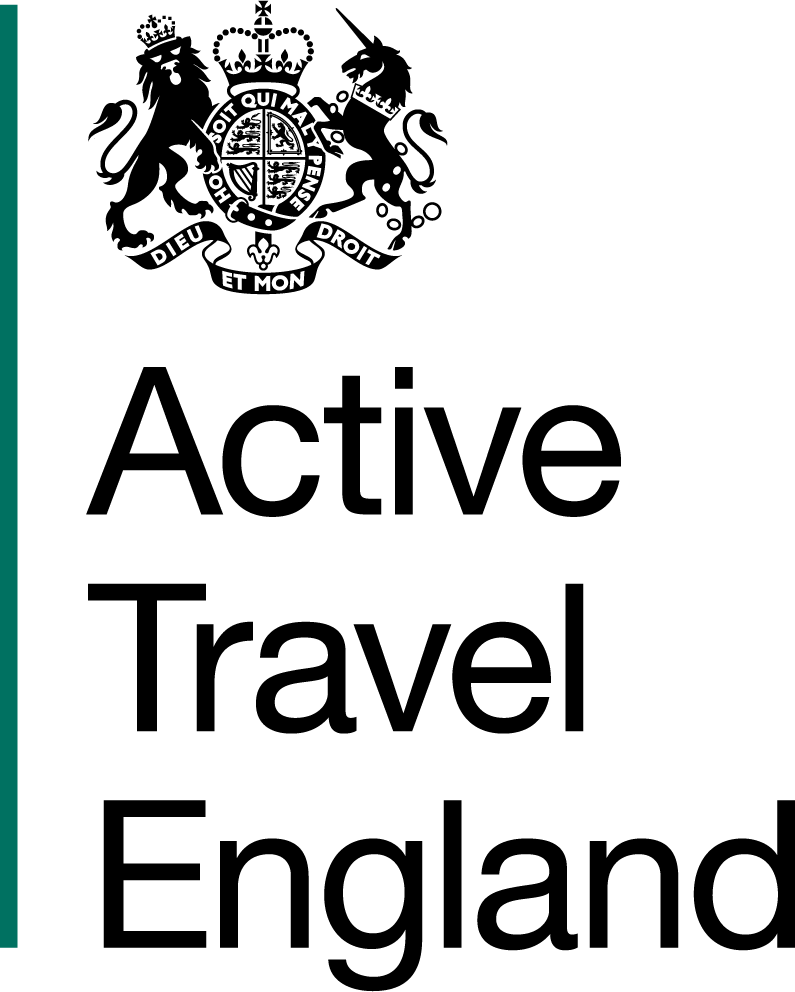3.6.6 Communication: Being able to communicate intentions clearly


Whether you’re riding in the park or out on the road, it’s important to tell others what you are doing. Communicating with others usually leads to a response from them and will allow you to perform certain manoeuvres.
Different ways to communicate when cycling:


When you want to turn, or sometimes before changing position, a clear hand signal can be the best way to communicate your intentions. You should only use hand signals if there are others to communicate to, and if you are able to control your cycle when doing so.
If you are using a cycle that is lower to the ground, such as a recumbent, you may be less visible to others so you may need to signal for longer.
You should signal clearly, so it is obvious to others. Signal well in advance of a junction and long enough for others to see.
![]()
![]()
When cycling on the road, your choice of road position tells others whether you would like to be overtaken or not.


When you look over your shoulder, you are communicating that you need information to make your next decision. Looking over a particular shoulder can show that you want to move in that direction. Clearly looking in a particular direction can get people’s attention.


Making eye contact can help you assess whether the other person has seen you or not and develop a brief positive interaction. You may find this more useful when riding slowly off road on paths that you share with pedestrians. In some places it can be tricky because of speed and distance, and some people may find it difficult. If it is not possible or preferred, reading faces or body language is a good alternative too, as well as other communication methods.


This is helpful when sharing space with pedestrians. Do not rely on talking when out on the road because others are unlikely to hear you.


Provided you use a bell politely, it can be a useful way to let others know that you are there – for example, to alert pedestrians on paths.
